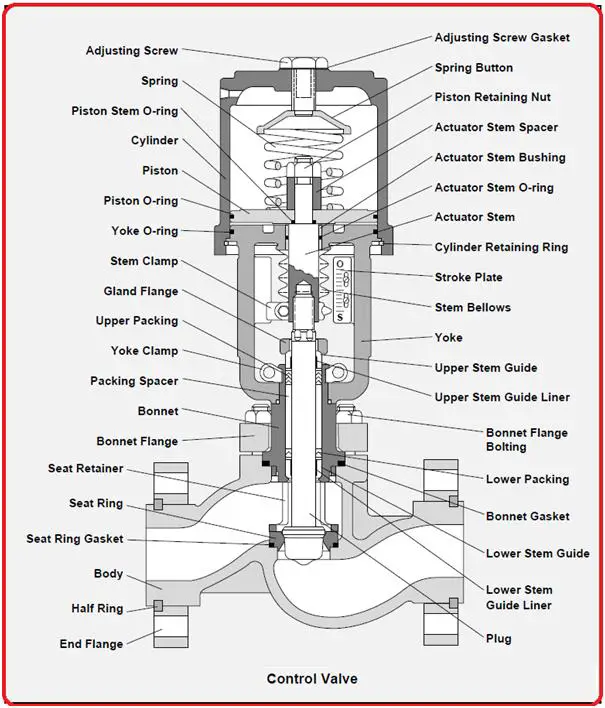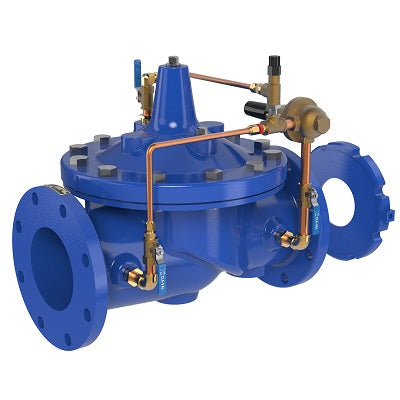Optimizing System Control with High-Performance Control Valves
Optimizing System Control with High-Performance Control Valves
Blog Article

Maximize Power Cost Savings and Comfort With Advanced Building Automation Controls
In the world of contemporary architecture and facility monitoring, the integration of sophisticated structure automation regulates stands as an essential development. The merging of innovation and sustainability has actually birthed a new period where energy effectiveness, comfort optimization, and operational streamlining are no more remote goals yet obtainable facts. By using the power of automation, structures can adjust, react, and advance in ways that were when unimaginable. The possibility for significant energy savings and enhanced comfort is not just a possibility but a guarantee waiting to be satisfied. This standard change in structure management holds the vital to unlocking a globe where environmental conscientiousness and occupant wellness harmoniously coexist within the walls of our structures.
Energy Effectiveness Benefits
Energy performance benefits can significantly reduce energy consumption and functional prices in structures. By carrying out energy-efficient techniques and technologies, structure proprietors and drivers can attain considerable savings while likewise adding to environmental sustainability. Among the key advantages of enhancing power performance in structures is the decrease of energy costs. Energy-efficient systems, such as advanced building automation controls, can enhance using resources like illumination, cooling, and heating, bring about lower energy expenditures gradually.
Additionally, improved power effectiveness can lengthen the life-span of structure equipment and systems. By running more effectively, a/c systems, lighting fixture, and various other structure components experience less wear and tear, leading to lowered maintenance and substitute expenses. Additionally, energy-efficient structures typically command greater residential or commercial property values and rental prices, giving long-lasting monetary benefits to owners.
Moreover, energy effectiveness can improve occupant comfort and efficiency. Appropriately controlled indoor atmospheres with ideal lighting and thermal problems produce an even more conducive and enjoyable work area, resulting in improved staff member satisfaction and efficiency. Overall, the power effectiveness benefits related to advanced building automation controls are complex, incorporating expense financial savings, ecological stewardship, and resident wellness.
Boosted Convenience Control
Enhancing comfort control in structure atmospheres calls for an advanced combination of innovative automation systems for ideal passenger well-being. By using advanced structure automation controls, centers can customize the interior atmosphere to satisfy the details requirements and choices of residents. control valves.
By including these innovative controls, buildings can not just improve convenience yet additionally enhance power effectiveness by maximizing system operations based on real occupancy and usage patterns. Ultimately, prioritizing owner convenience through advanced automation systems leads to an extra pleasurable and much healthier interior atmosphere.
Operational Effectiveness Improvements

Additionally, the execution of real-time surveillance and analytics tools makes it possible for building drivers to identify power inadequacies and operational anomalies immediately. By constantly checking energy use patterns and system efficiency metrics, adjustments can be made in real-time to optimize energy consumption and ensure peak functional effectiveness. control valves. In addition, integrating demand feedback techniques into building automation controls can additionally improve functional performance by dynamically adjusting energy use based on grid conditions and pricing signals
Indoor Environment Optimization
Efficient indoor environment optimization websites is an essential element of building automation controls, ensuring passengers' comfort and wellness while making the most of power financial savings. By using innovative sensors and controls, constructing automation systems can continually adjust and keep track of temperature, moisture levels, air quality, and air flow to develop an optimal indoor setting. Keeping consistent and comfy problems not just improves owner complete satisfaction however also improves productivity and general wellness.
Interior climate optimization also plays an important duty in energy performance. By fine-tuning air conditioning, heating, and ventilation systems based on real-time data and tenancy patterns, developing automation controls can considerably lower energy usage - control valves. Applying strategies such as demand-controlled air flow and thermal zoning can help decrease energy waste while making certain that each location of the structure gets the essential conditioning.

Lasting Environment Creation
Structure automation manages not just enhance indoor climate conditions for power efficiency and occupant comfort however additionally lay the foundation for creating a sustainable setting with tactical administration of systems and resources. By incorporating try this advanced structure automation modern technologies, such as sensors, actuators, and intelligent software, facilities can monitor and adjust power use in real-time to minimize waste and minimize their carbon footprint. These systems make it possible for predictive upkeep, recognizing potential concerns before they intensify and maximizing tools efficiency to improve long life and efficiency.
Additionally, sustainable environment creation expands beyond energy administration to include water preservation, waste decrease, and indoor air quality improvement. Building automation controls can regulate water usage, find leaks, and make certain appropriate garbage disposal practices, adding to total sustainability initiatives. Furthermore, by managing and checking air flow and filtering systems, these innovations enhance occupant health and performance while reducing power intake associated with HVAC operations.
Conclusion
In conclusion, progressed structure automation manages deal considerable benefits in regards to power savings, convenience control, operational efficiency, indoor climate optimization, and developing a lasting atmosphere. By carrying out these controls, buildings can achieve optimum performance while decreasing energy usage and enhancing owner comfort. It is obvious that using advanced automation modern technology is crucial in improving building performance and developing a more lasting future.
Energy effectiveness benefits can substantially reduce power consumption and functional prices in buildings. Generally, the energy efficiency advantages associated with innovative structure automation controls are multifaceted, encompassing cost financial savings, environmental stewardship, and resident well-being.
In addition, including demand action approaches right into building automation controls can better boost operational efficiency by dynamically readjusting energy use based on grid problems and pricing signals.
Structure automation manages not only maximize indoor environment conditions for power browse around these guys effectiveness and occupant convenience however additionally lay the foundation for developing a sustainable atmosphere through critical administration of systems and resources.In conclusion, advanced structure automation regulates deal significant benefits in terms of energy savings, convenience control, operational performance, indoor environment optimization, and developing a sustainable setting.
Report this page